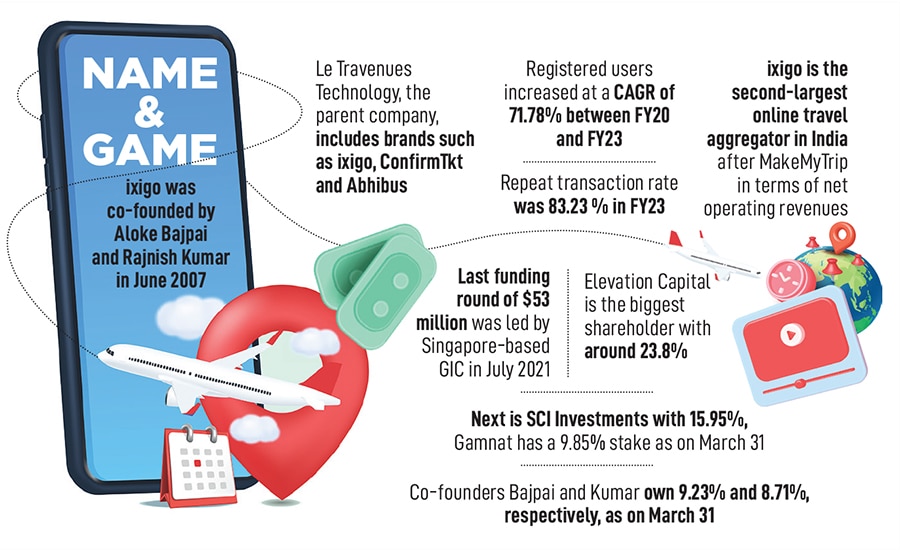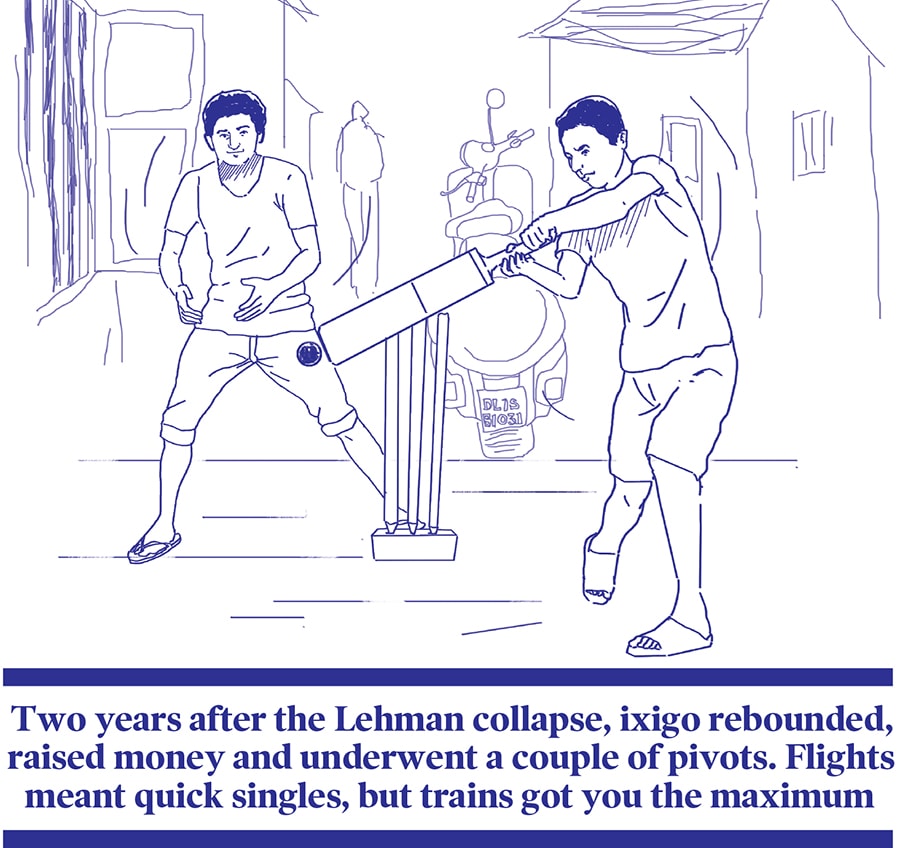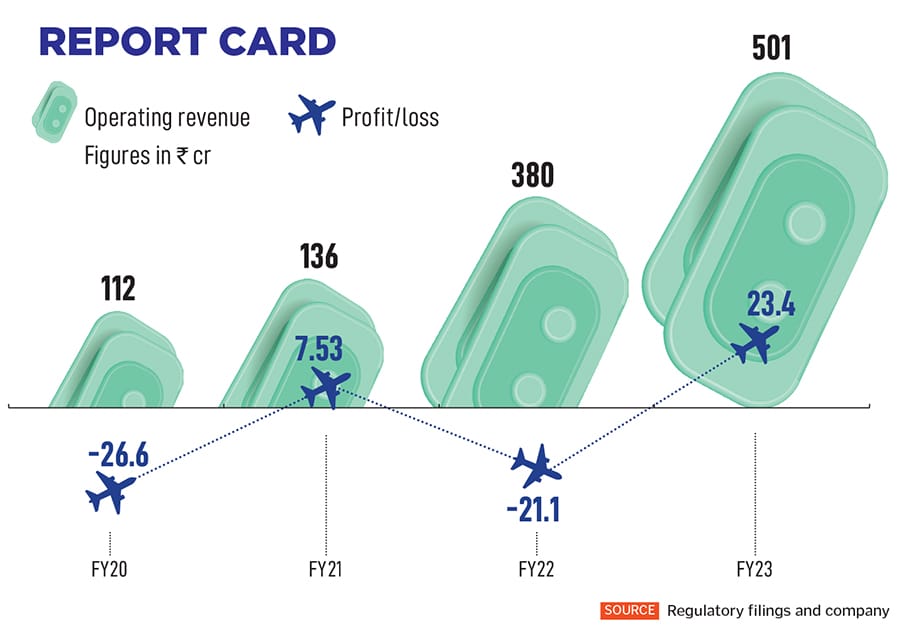In skills as well, there was a close tie. The VC was notorious for extracting the best deal for her fund the engineer from Kanpur, on the other hand, did his MBA from INSEAD and learnt his craft at Spanish multinational travel tech company Amadeus. In terms of report cards too, the ‘seeker’ and the ‘sought-after’ were even-Stevens. Entrepreneurs aspired to have the VC on their board, the maiden venture of the funding aspirant—ixigo—too had an envious start. After a four-year stint with Amadeus, Aloke Bajpai and his IIT-Kanpur batchmate Rajnish Kumar came back to India in 2006, and started ixigo in June 2007. In just seven months of its launch, the meta-search website for flights raced to cross over 1 lakh organic-visitors’ mark.
Meanwhile in Bengaluru, the founder was confident of raising his maiden round of funding. Sadly, Bajpai’s hope dashed within minutes of pitching. “What is your ask?" was the query. “One million dollar," came a swift reply. “I would be surprised if you ever raise that kind of money," the VC gave her assessment. The market reality was bitter. A bunch of OTA (online travel aggregators) players such as MakeMyTrip, Cleartrip, Yatra, ibibo and Travelguru had already made a splash, and the cluttered space didn’t have room for one more OTA player. In fact, the problem with ixigo was that it was not even an OTA player when it started. It didn’t sell any tickets. “We used to compare, crawl, and redirect into websites that were selling tickets," he says, explaining the original business model.
An unknown business model was a problem. First, it was beyond the comprehension of investors as there was no precedent. Second, it was not sure if the model had enough potential to become big. Third, everybody looked for tried-and-tested businesses. “To be honest, we didn’t do enough analysis of the market sizing," he confesses. In spite of a spate of unticked boxes, Bajpai didn’t expect anybody to tear into the confidence of the founders. This is exactly what the VC did. “Forget funding, I don’t think you will ever make money or grow big," she concluded.
The brief meeting left a lasting impact. “I went back dejected and couldn’t sleep that night," Bajpai recalls. The fierce and unrestrained criticism of the business, and unwarranted attack on the founder shattered the self-belief of the greenhorn. “Imagine somebody telling you that you’re not worth anything… it was brutal," recounts Bajpai, who was born in Allahabad, got relocated to Kanpur after six years, and then his father got an overseas stint of four years at Mombasa, Kenya. The family came back to Kanpur, and his father continued to impart the lessons of self-belief into his lad.
![]() The seeds of self-belief were sown in school. When he was in class 8, Bajpai’s father took him to IIT-Kanpur to give him a dekko of the hallowed institution. “This is one of the best in India. If you work hard, one day you can study here," he told his young son who was impressed with what he saw. “Self-belief is the key," underlined his father, who did his masters in Maths. “I found an old IIT application form in his closet," says Bajpai, who wanted to live the dream of his father.
The seeds of self-belief were sown in school. When he was in class 8, Bajpai’s father took him to IIT-Kanpur to give him a dekko of the hallowed institution. “This is one of the best in India. If you work hard, one day you can study here," he told his young son who was impressed with what he saw. “Self-belief is the key," underlined his father, who did his masters in Maths. “I found an old IIT application form in his closet," says Bajpai, who wanted to live the dream of his father.
The young boy did make his father proud. But the success came after a shocking twist in the tale. It was 1997. “I still vividly remember the year," recalls Bajpai. “It was the only time the engineering entrance exam got cancelled because the paper got leaked," he adds. Everybody predicted that the new paper would be the toughest in the history of JEE (joint entrance examination). “And many pundits still believe it was," says Bajpai, who cleared his exams and joined IIT-Kanpur. “Confidence and perseverance pay off," he says.
![]()
Fast forward to July 2008. The perseverance did pay. After failing to raise any funding from top-notch VCs in 2007, Bajpai reached out to his B-school friends, raised a small amount, and got a lifeline. A few months later, in February 2008, an inbound interest from a Singapore-based VC fund—BAF Spectrum—resulted in a seed round. The funding, interestingly, had a cascading impact. All the VC funds who once rejected the upstarts came back and made a queue to invest. In July, the hustlers got a term sheet for $7 million from a top-notch VC fund, and the deal was supposed to get inked in 30 days.
There was a delay of 30 days, though. And it cost a lot. The ixigo funding was set to get sealed on September 13. Two days later, on September 15, Lehman Brothers filed for bankruptcy. There was a full-blown global financial crisis, and in India, the prospective funder backed out. Bajpai was in a big fix. He was soon going to run out of money. The absolute certainty of an impending funding had propelled the founding team to do things they would have never done: Hire more people, shift to an office which was three times the size of the last one, and increase marketing expenses. “With no funding, we were staring at an imminent crisis," he recalls. A town hall was summoned, the founders discussed the situation with the employees, and the need for a quick fix or layoff was underlined. A young engineer, interestingly, came with a solution: Take a salary cut and increase the runway. “This was the formula which made us survive for the next 12 months," says Bajpai. The founders took a 100 percent cut, the rest of the staff went to half, and a generous landlord, too, decided to take a 50 percent cut in rent. “We survived," says Bajpai.
![]()
Back in the early 90s, in the narrow bylanes of Kanpur, a young schoolboy was learning the art of survival. “We used to play gully cricket," says Bajpai. The nature of the playground—a long vertical strip hemmed from both the sides, a few stationary scooters dotted on the road, and a Maruti 800 of Bajpai’s father parked on one of the ends—meant that the best scoring shot for a batsman was a lofted straight drive. Though one could score in singles by placing the ball either on the left or right of the wicket, hitting. straight meant maximum.
Meanwhile, in 2010, two years after the Lehman collapse, ixigo rebounded, raised money over the next few months and underwent a couple of pivots. From a lead-generation platform for others, it was moving towards being a full-fledged OTA. Though it did help it to make more money, still it was not the lofted straight drive that Bajpai and Kumar were looking for. Flights meant quick singles. Trains, on the other hand, were the maximum. In 2014, it launched a train app in 2019, it became an OTA and in 2021, it bought train booking firm ConfirmTkt, and emerged as the biggest train travel booking platform in India.
![]()
The straight drive seems to have paid off. Look at the numbers. From ₹112 crore in FY20, the operating revenue has jumped to ₹501 crore in FY23. Now when one looks at the contribution of the train, one gets to see the real picture. In FY23, booking of train tickets was the highest revenue grosser with 61 percent, followed by flight and bus which contributed 21 percent and 19 percent, respectively, according to TheKredible, a startup data intelligence platform owned by Entrackr. What’s more interesting is that ixigo has turned profitable.
Bajpai explains why he hopped on to a train ride. When the OTA business model started in India, he underlines, everyone launched flights, followed by hotels. “That’s the western template of building an OTA in India," he says, underscoring that around 93 percent of Indians have never stepped in an airport in their life. “This number will come down to 90 percent over the next few years," he says. The fact remains that, for most of the Indians, travel is equivalent to a train or a bus. “So if we are not serving that core audience, we can’t build a large travel company," he says. Most of the users of ixigo, he claims, come from Tier II, III and beyond. “I can empathise more with the pain of the guy sitting in a sleeper class in a train or commuting in a non-AC bus," he adds. In August 2021, ixigo bought Hyderabad-based bus ticketing and aggregation platform AbhiBus. “Once I sat on the roof of the bus and commuted. There was no seat and I had to reach a town. That’s why I did that," he says. Over 90 percent of the companies want to build for the top 100 million users. “But we are building for Bharat. That’s the future, and the big opportunity," he says.
![]()
Founders from small towns, reckon VCs, are privileged to sniff the untapped opportunity in Bharat. “They build for the masses by identifying a problem and pain point," says Gagan Goyal, partner at India Quotient. Such founders don’t start their venture by zeroing on how big the total addressable market (TAM) is or rolling out a me-too product. “They solve for pain, and that’s why they gain," he says. The gain, though, is not sudden. It takes years.
Bajpai, for his part, tells us how the co-founders kept themselves in the game for years. “We have been growing every year. But it’s only when we hit the ₹500-crore mark that you start noticing us," he smiles. “Nobody notices the first 10 years or the journey from zero to ₹100 crore," he says. His resilience, he points out, comes from the place where he was brought up, and the man who brought him up.
“I have seen my father’s slog from being a clerk to a senior manager. It was a 30-year ride," he smiles. Small-town folks are underdogs, he adds. “People won’t believe you. They won’t back you. But you still need to carry on," he says. Kanpur, too, went unnoticed for decades in its journey from being a small town to now having the strappings of a big city globally known for chemicals, textiles and leather. “But it still has the fiery soul of a small town," he says. Meanwhile in 2018 and 2019, Bajpai had to endure a trial by fire. “We spoke to over 100 investors," he says, alluding to the tough task of raising funds. “All declined," he rues. The self-belief and the business, however, remained intact.
In 2007, the young entrepreneur was conjuring his self -belief after a verbal thrashing by the investor. “The next morning, I told myself that I must prove that she is wrong," recalls Bajpai. Over one-and-a-half decades later, the gritty founder has lived up to his promise umpteen times.

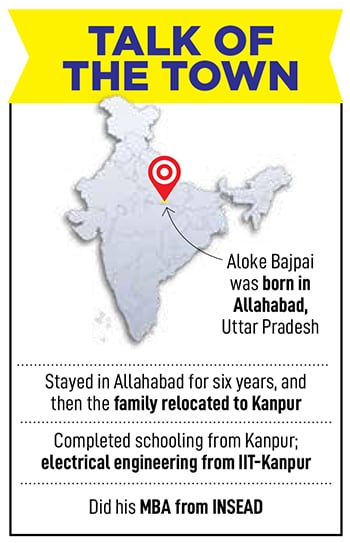
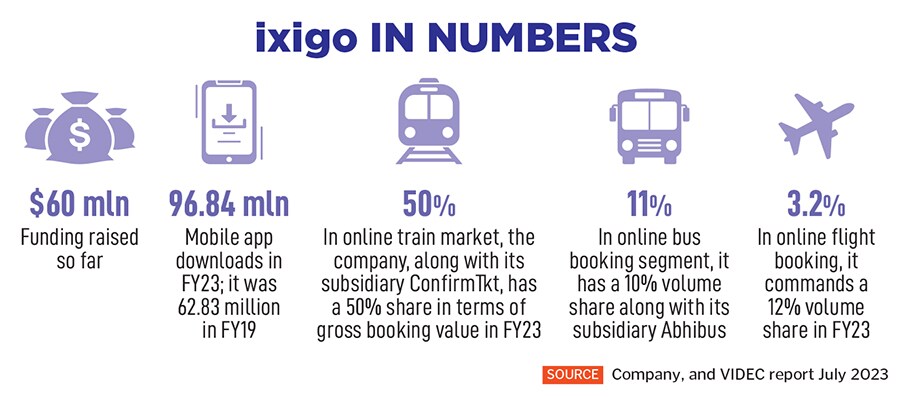 The seeds of self-belief were sown in school. When he was in class 8, Bajpai’s father took him to IIT-Kanpur to give him a dekko of the hallowed institution. “This is one of the best in India. If you work hard, one day you can study here," he told his young son who was impressed with what he saw. “Self-belief is the key," underlined his father, who did his masters in Maths. “I found an old IIT application form in his closet," says Bajpai, who wanted to live the dream of his father.
The seeds of self-belief were sown in school. When he was in class 8, Bajpai’s father took him to IIT-Kanpur to give him a dekko of the hallowed institution. “This is one of the best in India. If you work hard, one day you can study here," he told his young son who was impressed with what he saw. “Self-belief is the key," underlined his father, who did his masters in Maths. “I found an old IIT application form in his closet," says Bajpai, who wanted to live the dream of his father.